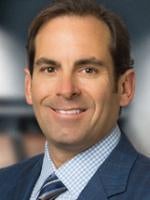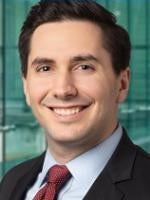On March 23, the Federal Reserve announced new measures it would be taking to support the credit markets and the broader economy in the face of the economic and credit disruption caused by the COVID-19 pandemic and related governmental interventions. Those measures include expanded purchases of treasury and agency MBS securities as part of open market operations, as well as several new credit facilities to support US credit markets.
Beyond these interventions in the capital markets, the most novel of the Federal Reserve’s announced new measures is the Main Street Business Lending Program—a Federal Reserve credit program to encourage expanded lending activity to small- and medium-sized businesses. The proposed program would fill the gap between (1) the small businesses that would be assisted by the Paycheck Protection Program (the “PPP”) along with other existing and expanded SBA lending activity contemplated by the Coronavirus Aid, Relief, and Economic Security Act (the “CARES Act”) and (2) the large investment grade corporations that would be supported by the Federal Reserve’s announced primary and secondary market corporate credit facilities. On April 9, the Federal Reserve released term sheets (the “April 9 Term Sheets”) for two facilities—the Main Street New Loan Facility (the “MSNLF”) and the Main Street Expanded Loan Facility (the “MSELF” and together, the “Facilities”)—that would serve potential borrowers in this gap.
Unlike the SBA lending assistance, which is limited to the amounts appropriated for that purpose under the CARES Act, the Facilities would utilize an initial invested amount of $75 billion from the U.S. Treasury along with leverage from the Federal Reserve to expand the total lending capacity across the Facilities to up to $600 billion. Even with the additional details in the April 9 Term Sheets, significant issues and open questions remain, including when the facility will launch and result in increased credit availability to borrowers. We expect details as to timing and resolution of some of the remaining open questions to be forthcoming in additional guidance from the Federal Reserve. In its April 9 release, the Federal Reserve also solicited comments on the Facilities through April 16. Below we present details on the Facilities included in the April 9 Term Sheets, as well as discussion of some issues and open questions related to the program.
MSNLF and MSELF Terms Based on April 9 Term Sheets
Structure
The Federal Reserve will create a special purpose vehicle (the “SPV”) that is capitalized with a $75 billion investment from amounts appropriated to the U.S. Treasury under the CARES Act, along with leverage from the Federal Reserve, which would support an initial total lending amount of up to $600 billion in aggregate across the Facilities. The SPV would purchase participations constituting a 95% interest in eligible new loans (under the MSNLF) and eligible tranches of existing loans (under the MSELF), with the originating lender retaining the remaining 5%. The originating lenders would continue to service the loans, and the April 9 Term Sheets are silent as to whether the SPV would have any initial or springing control rights as the majority lender with respect to its participation interest. The MSELF would function by a borrower and lender creating an additional tranche (meeting the requirements of the MSELF) under an existing loan, with a 95% participation in that upsized tranche then being sold to the SPV. Launch date is not yet determined and the Facilities would cease purchasing eligible loans on September 30, 2020, unless extended.
Eligible Lenders – U.S. insured depository institutions, U.S. bank holding companies and U.S. savings and loan holding companies.
Eligible Borrowers – U.S. businesses (created or organized in the U.S. or under laws of the U.S. with both significant operations and the majority of its employees based in the U.S.) with up to 10,000 employees or up to $2.5 billion in 2019 annual revenue. The April 9 Term Sheets do not discuss any required or permitted aggregation with affiliates, or whether common ownership or control has any effect on the availability of the Facilities. Borrowers may not participate in both Facilities, and may not participate in either Facility if they are also utilizing the Federal Reserve’s Primary Market Corporate Credit Facility for investment grade borrowers.
Eligible Loan Terms
-
Four year maturity
-
Payments of principal and interest would be deferred for the first 12 months
-
The Facilities are silent as to amortization period, which may be specified in a subsequent release or left to negotiation and underwriting between the lender and borrower
-
Variable interest rate of secured overnight financing rate (SOFR) index plus 250 to 400 basis points
-
Prepayment permitted without penalty
-
MSNLF is specified as “unsecured” term loans; MSELF loans would have a pro rata security interest in any collateral securing the existing loan (including any security added as part of the amendments to add the eligible loan tranche); the Facilities are silent as to guaranties or other credit support
-
Fees:
-
Lenders would be able to charge borrowers an origination fee of up to 100 basis points
-
The SPV would charge a facility fee of 100 basis points for new loans (not required under the MSELF), which the lender could pass through to the borrower
-
The SPV would pay a 25 basis points per annum fee to the lender for servicing the loan
-
-
Loans (or tranches) would have a minimum size of $1 million and a maximum size of:
-
For the MSNLF – the lesser of (i) $25 million and (ii) an amount equal to four times the recipient’s 2019 Earnings Before Interest Taxes and Depreciation (EBITDA), less the amount of any other committed but undrawn debt of the recipient;
-
For the MSELF – the lesser of (i) $150 million, (ii) 30 percent of the recipient’s committed but undrawn bank debt and (iii) an amount equal to six times the recipient’s 2019 EBITDA, less the amount of any other committed but undrawn debt of the recipient.
-
Required Attestations – Borrowers and Lenders would be required to make the following attestations, along with any other certifications required by applicable statutes and regulations:
-
The lender attests that the proceeds would not be used to repay or refinance existing loans or lines of credit of lender to borrower;
-
The borrower commits to refrain from using the proceeds to repay any other loan balances or from repaying other debt of equal or lower priority (other than mandatory principal payments) unless the Facility loan has first been repaid in full;
-
The lender and the borrower attest that they will not cancel or reduce existing lines of credit outstanding between the parties (or, with respect to the borrower attestation, with any other lender);
-
The borrower attests that it “requires financing due to the exigent circumstances presented by the [pandemic]” and that it will use the loan proceeds to “make reasonable efforts to maintain its payroll and retain its employees” for the term of the loan;
-
The borrower attests that the loan amount is consistent with the EBITDA leverage condition prong of the terms specifying a maximum loan amount;
-
The borrower attests that it will comply with the restrictions on compensation, stock repurchase and capital distribution included under Section 4003 of the CARES Act.
-
Compensation – For the term of the loan plus one year:
-
No officer or employee with total compensation greater than $425,000 in 2019 (other than pursuant to a collective bargaining agreement entered into prior to March 1, 2020) may receive total compensation during any consecutive 12 month period in excess of their 2019 compensation or shall receive severance or other termination benefits in excess of two times their 2019 total compensation; and
-
No officer or employee with total compensation greater than $3 million in 2019 may receive total compensation during any consecutive 12 month period in excess of $3 million plus 50% of that employee’s compensation excess over $3 million in 2019.
-
-
Buybacks – the recipient may not purchase any listed equity security of itself or any parent company (except under pre-existing contractual obligations) for the term of the loan plus one year.
-
Capital Distributions – the recipient may not pay dividends or other capital distributions with respect to common stock for the term of the loan plus one year.
-
-
Lenders and borrowers attest that they are eligible to participate under the terms of the Facilities, including the conflict of interest prohibition in Section 4019 of the CARES Act. The conflict of interest provision generally prohibits participation by certain members of the Presidential Administration, Congress, their families and entities they control.
Significant Open Issues
As the market awaits additional details on how the Facilities will be implemented, there are several key open issues that we expect to play out in further releases and development of the Facilities:
-
Credit Underwriting Matters – The Facilities involve a structure where the originating lender retains a minority of the credit risk, the bulk of which is held by the SPV via its participation interest. However, there is no indication that the Federal Reserve will specify credit or underwriting requirements, and lenders may face different incentives—particularly if they are already a lender to the borrower under existing drawn or committed debt. How this ultimately passes through into the terms that are available to borrowers (amortization periods, security or guaranty requirements, creditworthiness requirements, etc.) is a significant open question that will bear on the attractiveness of the financing and how widely available the Facilities are to borrowers, including those that may be in precarious financial positions due to the economic impact of the pandemic.
-
Affiliate Groups – The April 9 Term Sheets are silent as to what effect, if any, common ownership or control has on the ability of entities to access the facilities. This is important because many “businesses” in the relevant size range may operate through multiple legal entities with different geographic regions or lines of business. Whether the Facilities are available on a legal entity basis, or some other basis that reflects some aggregation within a common ownership or control group is a significant open question.
-
Attestations – Several open questions exist with respect to the attestations, including whether lenders will have any required role in enforcement for any perceived violations. Additionally, the April 9 Term Sheet required attestations are similar, but not identical, to the certifications required under Section 4003 of the CARES Act—for example, the prohibition on abrogation of collective bargaining agreements and the requirement to remain neutral in union organizing efforts are notably absent from the April 9 Term Sheets. Potential exists for serious consequences for allegedly false attestations under the False Claims Act and the interpretation of subjective or ambiguous attestations is a significant concern.
-
Restrictions on Eligible Businesses – Unlike Small Business Administration lending under the Section 7(a) program, the April 9 Term Sheets do not restrict eligible businesses based on type. Investment funds, real estate and gambling/vice businesses are notable open questions. The statement of maximum loan amount as a multiple of prior year EBITDA may effectively restrict participation by organizations for whom that may not be a relevant concept, such as nonprofits or professional associations such as law firms. Real estate ownership vehicles would be another potential category of borrowers, though it is not clear how the contemplated loans, particularly unsecured loans under the MSNLF, would meet credit underwriting standards in a real estate context.
-
Use of Proceeds – Other than a prohibition on usage of proceeds to repay existing debt, there are no other express restrictions in the April 9 Term Sheets on how a recipient uses the advanced funds. Given the fungibility of money, for organizations in this size range who may have other outstanding debt, contemplated capital expenditures or contemplated acquisitions or divestitures, there may be uncertainty as to whether any contemplated usage violates the terms or spirit of the Facilities. Pending further guidance, potential participants should think carefully in terms of their planned usage of the proceeds and what light that might cast on their required attestation that the recipient “requires financing due to the exigent circumstances” of the pandemic.
-
Federal Reserve Consent or Control Rights – Under the proposed model for the Facilities, the SPV would retain a 95% participation in the eligible loan or tranche. However, there is no discussion of Federal Reserve approval rights for loans or tranches proposed to be purchased, and no discussion or any consent or control rights that may be exercised by the Federal Reserve as majority lender. It would be problematic if any consent or participation was required of the Federal Reserve in connection with requested modifications or waivers under the loans.
-
SOFR-Based Loans – The April 9 Term Sheets specify the secured overnight financing rate (SOFR) as the applicable reference index for determining the interest rate on eligible loans. SOFR is the index that has been selected by the Federal Reserve’s Alternative Reference Rate Committee to replace U.S. dollar LIBOR when the expected discontinuation of LIBOR occurs in the coming years. There has been relatively little activity in SOFR-based bilateral loans to date and while this provision may have the side benefit of pushing the market toward this transition, it may also inject difficulty for borrowers or lenders who are not yet comfortable with this reference rate.
The April 9 Term Sheets and accompanying Federal Reserve release are available here.
* This Whitepaper is based on material publicly available as of the date stated above, and supersedes any prior versions that were based on prior available information. The Facilities are subject to continuing development by the Federal Reserve and U.S. Treasury, and the ultimate form of the Facilities may differ substantially from the terms stated above.








 />i
/>i

